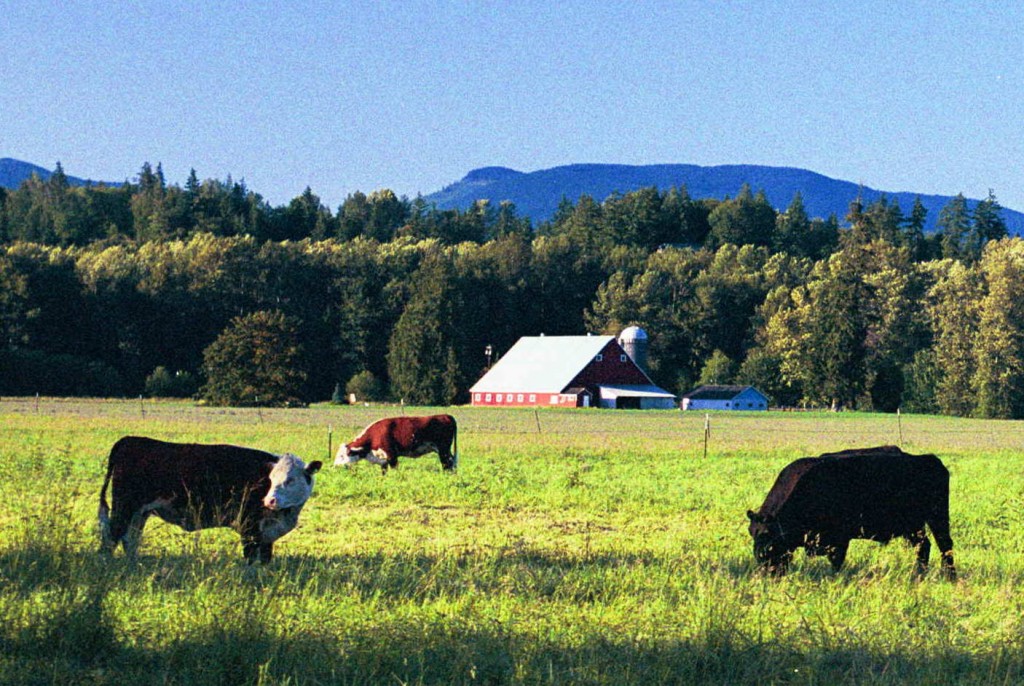Snohomish County, population 822,083 (2019), includes Everett and the northern suburbs of Seattle on Puget Sound and extends east to encompass portions of the Cascade Mountains. Concerned about the loss of valuable farmland, the County called for exploration of TDR in farmland preservation plans adopted in 1982 and 1993. Two TDR Feasibility studies were also conducted in the 1990s. In 2002, a third TDR Feasibility Study indicated that developers were likely to pay from $10,000 to $12,500 for a TDR allowing one additional home site assuming TDR was the only way to achieve urban density within newly established Urban Growth Areas (UGA.) The sending area was assumed to be portions of Stillaguamish River Valley in northern Snohomish County near the City of Arlington. In 2003, the County adopted a policy framework for a TDR program and designated the Stillaguamish River Valley as a TDR sending area in the Future Land Use Map.
Snohomish County, Washington’s TDR ordinance is designed to preserve farmland in the Stillaguamish River Valley shown here.
In December 2004, the County adopted a Phase I TDR Ordinance to preserve land with significant conservation values including natural resource lands, farmland, and open space: Chapter 30.35A Transfer of Development Rights. The county marks the start of its countywide program as 2013. After that, it was amended in 2015, 2016, 2017, and 2018.
As of October 2020, Chapter 30.35A identifies sending areas that include all land designated on the future land use map as Local Commercial Farmland, Upland Commercial Farmland, Riverway Commercial Farmland, Commercial Forest, Local Forest, and Commercial Forest-Forest Transition Area. Sending sites must be privately owned.
The total number of TDRs available for transfer from a sending site is the number of undeveloped legal lots greater than 5,000 square feet plus the acreage in the remainder of the sending site divided by 80 in the forest designations, 20 in the low-density rural designation, 10 in the farmland designations, and by 200,000 square feet in the rural residential designations minus the number of existing dwelling units.
Following acceptance of a conservation easement, the county issues TDR certificates specifying the land use designation and zoning of the sending site. Certificates are conveyed by deed of transferable development rights.
Receiving areas can be in cities by interlocal agreement, all county areas zoned Urban Center, areas in which comprehensive plan amendments increase density, all rural areas in which zoning changes increase density, and certain areas where code amendments or county-initiated rezones increase density.
In receiving areas within unincorporated Snohomish County that are not in urban centers, the maximum density when TDRs are used is the maximum with-bonus density allowed by current plans and regulations. The amount of added development allowed per TDR depends on whether or not the TDRs came from farmland sending sites. One TDR from a farmland sending site yields: a) 10,000 square feet of floor area in an urban center; b) 8 units in a multiple-family residential development with a density of at least 12 units per acre; c) 6 units in a multiple-family development with a density of fewer than 12 units per acre; and d) 5 units in a single-family residential development inside an Urban Growth Area. One TDR from a sending site not currently designated as farmland yields: a) 5,000 square feet of floor area in an urban center; b) 4 units in a multiple-family residential development with a density of at least 12 units per acre; c) 3 units in a multiple-family development with a density of fewer than 12 units per acre; and d) 2 units in a single-family residential development inside an Urban Growth Area.
In a communication of October 20, 2020, Steve Skorney, Snohomish County Senior Planner, reports that 14 TDR certificates were issued for the preservation of 44 acres of farmland. These TDRs were purchased by Forterra, a regional non-profit planning, and conservation organization, for $280,000 in December 2019. All 14 TDRs have been purchased by developers for multiple-family residential development. Roughly half of these TDRs were extinguished as of October 2020 for a receiving site development on a bus rapid transit route. The county is also working with Everett and other cities to develop TDR receiving areas.

